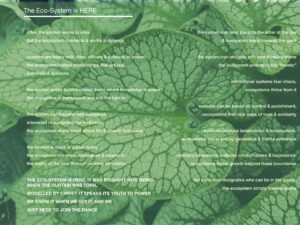
Super nerdy I know but the first time heard the phrase “Mixed Ecology” was sitting with Mark Berry back in May 2011 because it was the day I started Twitter. I had just heard Rowan give a brilliant address on ecclesiology, but around our table we were struggling with the economic metaphor and playing with ecology instead. There was Twitter feed behind Rowan and I wanted to join in.
It’s great that in more recent years Mixed Ecology as a concept has been gaining traction. Over the years the ecology phrase and mindset has become increasingly important to me to root and give shape to type of change I want to see. Back in 2011 at the conference my earliest tweets during the conference as Rowan spoke at were “if change comes the edge not sure I saw enough edge to change the landscape of church as we know it…” and “institutions on catch up”.
I wanted to reflect on these tweets as in reality the rise of the phrase Mixed Ecology shows nothing much changed, the institution is still on catch up. The term Mixed Ecology is great but once again its something developed from the edge, something other that has been colonised by the institution, and in doing so lost meaning, understanding and authenticity.
Notions of Ecology run deep within the emerging church, its about far more than a catch all phrase that seeks to make everyone feel welcome. For example It inhabits notions of an embodied ecological leadership approach that is highly networked, rooted, connected and equal. This is in direct contrast to the more mechanistic, modernist, leadership within the institution.
Heres something we wrote last year at the CMS HUI and perhaps if we are going to talk about a mixed ecology we remember it was a language of protest and contrast to the fiscal language of economy seeking to be faithful to the edge and start here…
often the system works in silos
but the ecosystem connects & works in synergysystems are heavy with titles, officers & symbols of power;
the ecosystem fosters relationships that are real, authentic & symbolicthe system works behind closed doors where knowledge is power;
the ecosystem is transparent and lets the light inthe system can become self-sustained,interested in sustaining the institution;
the ecosystem starts small where life & growth find a waythe system is stuck in a past reality
the ecosystem reframes, reimagines & adapts to the reality of the now through creative stimulationTHE ECO-SYSTEM IS HERE, IT WAS BROUGHT INTO BEING WHEN THE CURTAIN WAS TORN,
MODELLED BY CHRIST, IT SPEAKS ITS TRUTH TO POWER
WE KNOW IT WHEN WE SEE IT, AND WE UST NEED TO JOIN THE DANCEthe system can tend towards the letter of the law
& ecosystem leans towards the spiritthe system can struggle with new thinking where
the ecosystem embraces the “heretic”institutional systems fear chaos,
ecosystems thrive from itsystems can be based on control & punishment,
ecosystems find new ways of trust & solidaritysystems produce isolationism & monoculture,
ecosystems live in and by generative & fruitful symbiosisinstitutional systems cultivate comfort zones & boundaries.
ecosystems foster growth beyond these boundariesthe institution designates who can be in the space;
the ecosystem simply creates space.
